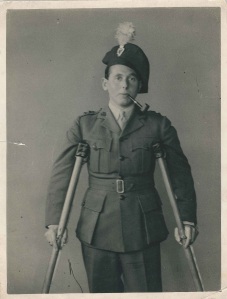This month sees the centenary of former Trinity College of Music (now Trinity Laban) student and composer George Lloyd, born on 28th June 1913. Although Lloyd’s music has been rather eclipsed by that of his exact contemporary Benjamin Britten,[1] his work was at times highly regarded during his lifetime, and is now enjoying something of a renaissance in this his centenary year. Next week, beginning 24th June, Lloyd will feature as BBC Radio 3’s Composer of the Week, later in the summer his work will be heard at the BBC Proms, and in October Lloyd’s first opera Iernin will be revived in Croydon and Penzance by Surrey Opera. Other performances can be found on the George Lloyd Society website.
George Lloyd began composing music as a child. He studied privately with Albert Sammons (violin) and Harry Farjeon (composition), and between 1929 and 1932 took lessons in piano and orchestration from William Lovelock at Trinity. In 1934, aged just twenty-one, Iernin was performed at the Lyceum Theatre and received to great critical acclaim. A performance of his third symphony by the BBC followed and in 1938 a second opera, The Serf, was put on at Covent Garden and in Liverpool and Glasgow.
Then, disastrously, World War II intervened. Lloyd joined the Royal Marines as a bandsman and went to work on HMS Trinidad, performing with the band whilst on shore and helping to operate the transmitting station whilst at sea. Tragically, whilst on an arctic convoy in March 1942, the ship was struck by its own malfunctioning torpedo. An oil tank was ruptured and the transmitting station where Lloyd and the rest of the band were working filled with oil. Thirty-one men died. Lloyd managed to escape but the experience left him injured and suffering from severe shell shock. Lieutenant Commander P. W. Dolphin wrote in his midshipman’s journal at the time, ‘nothing certain is known about the T.S. because those who escaped remember nothing of what happened’.[2] Another eyewitness recalled that an hour after his escape ‘George Lloyd was still being violently sick’, presumably from ingesting oil.[3] In his own words Lloyd was left a ‘total wreck’.[4]

Reproduced with the kind permission of William Lloyd
After some time spent in a military hospital in Aberdeen, Lloyd’s wife Nancy took him away to her home country Switzerland and, against the prognosis of doctors, gradually nursed him back to health. He began to compose again and even fulfilled a commission from the Festival of Britain for an opera, John Socman, in 1951. But with his fragile health he was unable to face the London music scene and retreated to Dorset where he spent many years working as a market gardener, first growing carnations and later mushrooms. He continued to compose but his music was unheard for around twenty years. It was only in 1977 that interest in his work was renewed. The BBC broadcast his 8th symphony and, championed by former Trinity College of Music principal Gavin Henderson, then manager of the Philharmonia, Lloyd’s work began to be recorded.
By the end of his life in 1998 George Lloyd had written twelve symphonies, three operas, and many other instrumental and vocal works. His work was performed world-wide, widely published and extensively recorded. Three years before his death he appeared on Desert Island Discs choosing extracts from two of his works alongside music by Verdi, Bach and Elgar. You can listen to the broadcast here.
We have several recordings of George Lloyd’s music here in the library and some of his scores. They are all listed on the online catalogue. Lloyd’s manuscripts are held by the British Library; the score of the fourth symphony will be on public display there from 22 June.
[1] The phrase ‘Britten’s forgotten contemporary’ was quoted in ‘Return of the Tune: George Lloyd Talks to Edward Seckerson’, Radio 3 Magazine, vol. 3/2 (Februrary 1984), pp. 2-4
[2] Imperial War Museum: Private Papers of Lieutenant Commander P W Dolphin RN, Documents.17116, 242pp.
[3] Frank Pearce, The Ship that Torpedoed Herself: HMS Trinidad (1975), p. 81.





